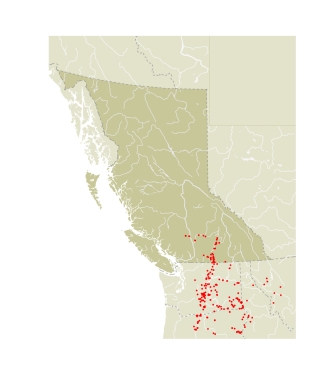The name Pholisora may be derived from the Greek pholis, meaning lurking in a hole, and ora, meaning season, especially spring (Bird et al. 1995). This may refer to the wings being the dark colour of a hole, and the spring flight period. The common name for the genus was first used by Scudder (1889b).
This genus is structurally similar to Erynnis, Pyrgus, and Heliopetes. The only species in our area has a uniform black ground colour with several groups of small white spots arranged in rows. The genus is Nearctic and centred in the US southwest. There are either two or five species in the genus, depending on whether Hesperopsis Dyar is given generic rank. Regardless of whether Hesperopsis is recognized, the BC species falls in the genus Pholisora. Pholisora larvae feed on Chenopodium (Chenopodiaceae) and Amaranthus (Amaranthaceae). Hesperopsis larvae feed on Atriplex (Chenopodiaceae).
|
|
